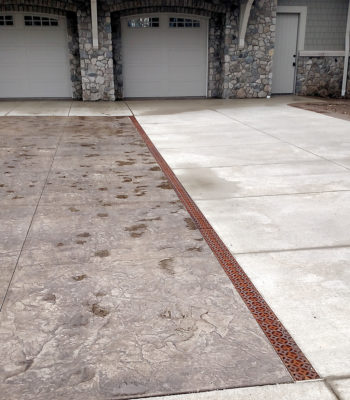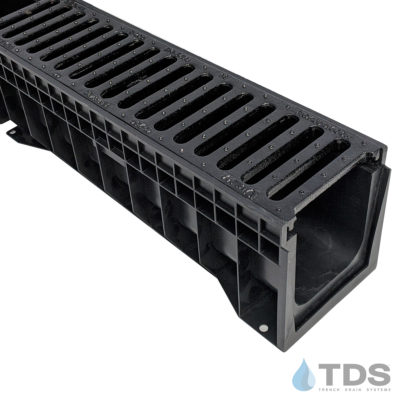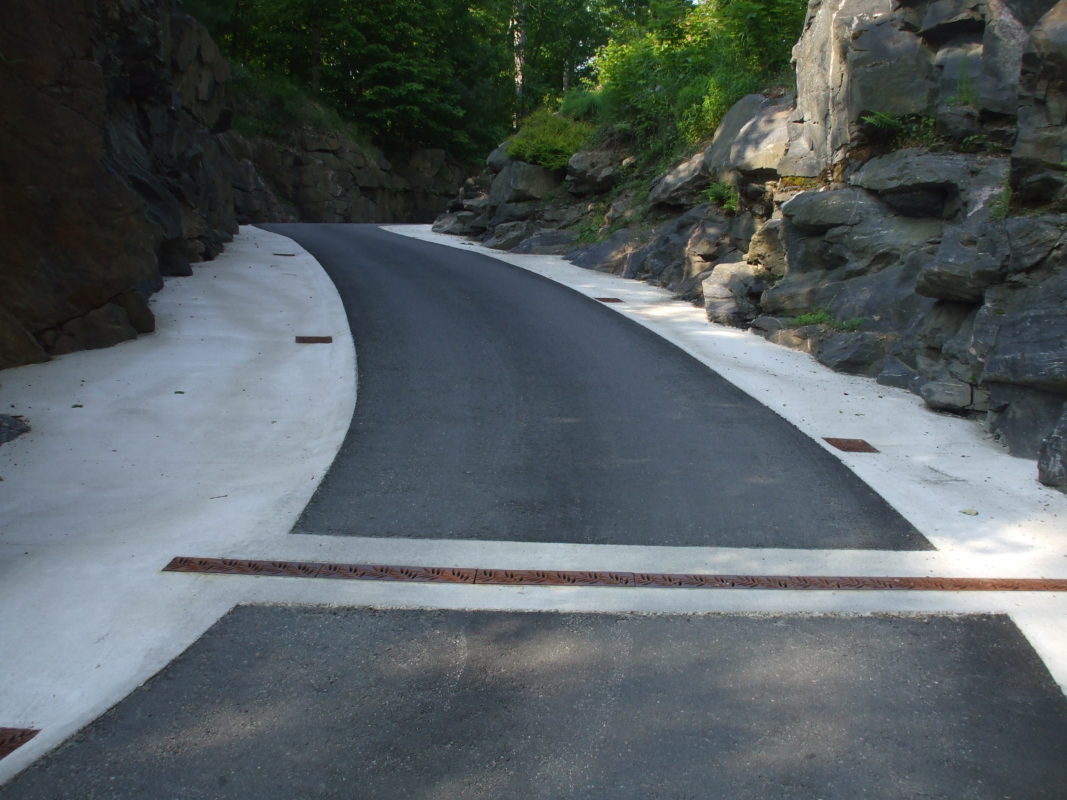
It doesn’t matter where you live, there will always be an opportunity for a weather event that can cause your driveway to flood. Storm water alone can be excessive and your driveway can easily become inundated from additional runoff from nearby rooftops, neighboring streets and sidewalks. Since water follows/pushes water, it collects and pools at the lowest point. Over time, it starts to erode the surrounding soil and breaks down concrete and pavement as well. In areas that experience seasonal freezing and thawing, erosion can occur at a more rapid pace. At that point, you realize that you need to invest in driveway drainage. It can be a daunting and expensive process, especially since there are a wide range of trench drain systems and an even wider selection of grating options. So how do you know which system to choose?
There are several factors that you need to take into consideration when selecting your system. The first is determining the load class you’ll need. Load Class ratings are an industry standard based upon traffic weight whether it is pedestrian, forklifts or jetliners. How this translates to trench drain systems can be easily explained. For example, patio areas would only require drainage systems with a Load Class of A since they would only have pedestrian traffic. The heavier the vehicles or weight load, the higher the load class rating. For residential driveway drainage, class C drainage systems are commonly used.
The next consideration is determining how deep of a system you will need. This is dependent upon the placement of your system and how much rainwater you need to divert. Trench drainage located near the entrance of the garage tends to receive less runoff than driveway drainage at the mouth of the drive. Shallow systems are available if conditions do not allow for deeper channels. However, keep in mind that these systems are usually non-sloping. That leads us to the next variable. Does your system need to have a slope? In many cases, a neutral or non-sloping system is adequate. As was mentioned earlier, water pushes/follows itself to the lowest and least resistant path.
Channels for trench drain systems come in several material options from plastics to fiberglass and polymer concrete. For this application, the drainage options are equal when it comes to effectiveness. You may question the strength of plastic channels compared to polymer concrete but you have to remember that these channels are being set in concrete which provides the much needed support. Unless you expect regular heavy traffic moving across your drain, you can be confident that a plastic system will be the most cost effective option.
The next decision may be the most overwhelming in the process. You wouldn’t think that selecting grates would be confusing, but it can be. Once again, you have to consider the load rating. Even if your drainage channels are rated C, if the grates are rated A, it can only handle pedestrian or extremely light traffic. Grates also come in a wide range of materials including hard plastics, galvanized steel, stainless steel and cast iron. If you want something that keeps the most unblemished appearance over time, you should consider plastic, stainless steel or cast iron with a baked on oil finish (BoOF). Some grating options like stainless steel and galvanized steel are limited to patterns such as perforated and slotted patterns.


Overall, pricing for grates alone could range from below $30 to above $300 depending upon the factors were just mentioned. Channels made of polymer concrete tend to be slightly more expensive and even more so when it comes to shipping costs due to the weight. In keeping with the title of this blog, let me suggest a newer, economical plastic option called HYDROPLUS by ULMA Architectural Solutions. It’s lightweight design makes it easy to handle, easy to install, affordable on its own and comparatively inexpensive to ship.
Ultimately, you’ll have to do your research to determine what system is going to be right for you. Don’t go with the cheapest if you need something more robust. It’s better to invest the money now than to have it crushed by the first delivery truck that goes over it. Then, you’ll be paying a lot more to have concrete removed and a new trench drain system installed.
__________________________________
If you’ve done your homework and still need some guidance, Trench Drain System has experts on staff who are happy to help you determine which system and grate options will work for your project. Just call 610-638-1221. If you have a larger project we are happy to provide a fast and free quote. If you’re ready to do some shopping, our online store conveniently has driveway drainage kits with packaged trench drain systems including channels, grates and appropriate accessories.

